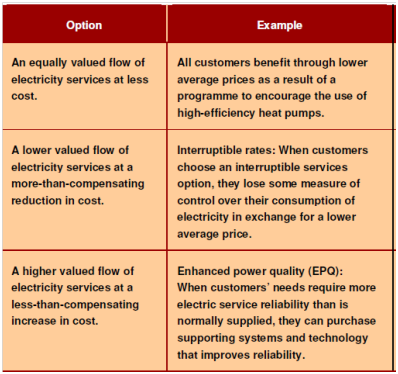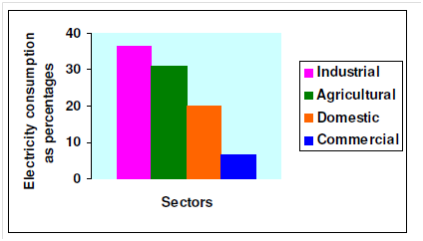Dsm For Consumer
The concept of DSM for consumers is not new utilities, by it is yet to pick up momentum. In the early days, several power utilities leased power-consuming devices such as electric toasters to consumers. The cost of the equipment used to be recovered from the consumer through the electricity bills. This was a version of DSM for diversifying the activities beyond traditional areas taking some advantage of the experience and network to deal with the customers. In recent years, there have been a few attempts by utilities to offer energy conservation related services, but these are more of an exception than the rule.
DSM on the consumer side needs in which a system of collection, analysis, and reporting on the consumer's energy consumption and costs be established.
Based on this information, various combinations of value and cost changes could be used, in common, for mutually benefiting the utility and its customers. Three such combinations are given as described in Table.
Table: Different Options for Energy Value and Costs

Many DSM programmes for all classification of consumers involve measures such as:
- Energy efficiency retrofits (weatherisation) of homes, particularly for low- income customers;
- Energy audits for commercial businesses and industrial units;
- Small rebates to install certain kinds of efficient new equipment such as geothermal heat pumps;
- Assistance in financing efficiency improvements;
- Information about energy for school children and the general public;
- Information about efficient construction techniques for new homes; and
- Economic criteria for the energy and environmental planning process.
We now discuss the specific DSM activities in which could be taken up through utilities as well as consumers along with a few examples from the industrial, domestic, agricultural and commercial sectors of our economy.
To starts with, you require to understand the sector-wise pattern of electricity consumption in our country. It reveals that the industrial consumption (~ 36.5%) is the highest, followed through agriculture (~ 31%), domestic (~ 20%) and commercial (~ 6.5%).

Figure: Sector-wise Electricity Consumption
A report of the National Development Council committee on power has implies (Table) the power consumption stages and saving potential in the industrial, agricultural and domestic and commercial sectors.
Table: Electricity Saving Potential
|
Sector / Industry
|
Consumption
|
Conservation
Potential
|
|
Industrial
|
36.5%
|
Up to 25%
|
|
Agriculture
|
30.7%
|
Up to 30%
|
|
Transport
|
2.8%
|
Up to 20%
|
|
Domestic and
Commercial
|
26.5%
|
Up to 20%
|
We first outline the DSM strategies required for the industrial sector to realize this energy saving potential and achieve energy conservation.